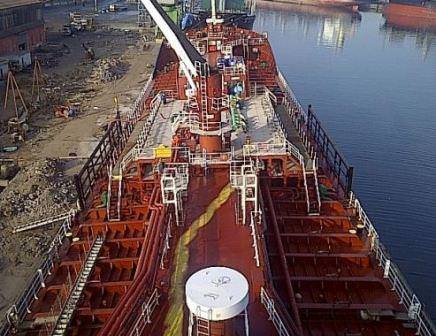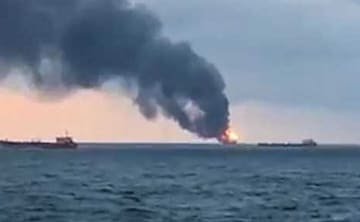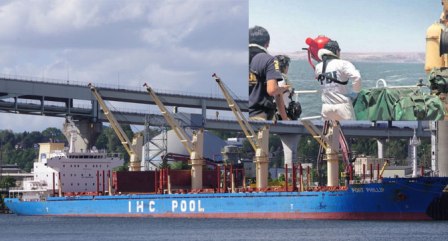Serious Injury to Crew Member During Mooring Operations.An able seaman on board a Maltese registered tanker lost his lower left leg as it became entangled in the tug’s messenger line and got stuck between a deadman roller and its guide.
The aft mooring station was in the process of releasing the tug’s tow line when the accident happened. Despite the quick response of the master to seek medical assistance and the rapid response of the paramedics, the AB’s leg could not be saved.
The safety investigation determined that the tow line had not been stoppered off when the eye was taken off the bollard. Moreover, when the messenger line was taken off the drum, the tug continued to heave in the line, resulting in the AB getting entangled with the messenger line.
The MSIU has issued four recommendations to the Company aimed to enhance the safety during mooring operations on board its managed vessels.
Cause of accident
The accident happened during a crucial stage of casting off the tug’s line. Although the safety investigation did not have access to the assisting tug’ crewmembers, the MSIU believes that once the eye of the tug’s line was in the mouth of the Panama fairlead, i.e. the time when the messenger line was taken off the drum, instead of stopping, either the tug’s skipper or a crewmember controlling the winch continued to heave on it.
This would have resulted in a sharp pull at the line (once clear of the Panama fairlead) would have dropped a few meters because of the slack on the messenger line. This jerk on the line, during the brief period of transition from the drum to the bollard, may have upset AB1’s balance and resulted in him stepping on to the messenger line and getting entangled in it. It is the view of the MSIU that the subsequent force required to have caused this serious injury, suggested that the tug’s line was being heaved in at the time of the accident.
The MSIU believes that since there was no direct communication between the vessel and the tug, the crew on board the tug would have had no reason not to heave in the line, once they saw the tow line being lowered.
CONCLUSIONS
- The accident happened during a crucial stage of casting off the tug’s line when the latter was being heaved on board the tug.
- During the task, there was no two-way communication between the second mate and tug’s crew. Therefore the tug’s crew would not have known that they were required to stop while the messenger line was being transferred and placed around the bollard.
- The tow line had not been stoppered off when the eye was taken off the bollard. Therefore, when the messenger line was taken off the drum and the tug continued to heave in the line, it may have upset the balance of AB1, resulting in him getting entangled with the messenger line.
- By operating the winch controls, the second mate was not able to signal to the tug not to have the tow line before the messenger line is safely transferred onto a bollard.
- At the time of the accident, the aft mooring station was not adequately manned.
- As a result of the prevailing context, none of the crew members on the aft mooring deck was able to anticipate how the status of the system could eventually change.
- The method of releasing the tug’s line was not in accordance with industry practices.
RECOMMENDATIONS
- request that the findings of this safety investigation are discussed during safety committee meetings on board in order to reinforce the importance of following the industry practice when releasing tug’s lines.
- review its safety management system to better address mooring (and unmooring) operations.
- review its current risk assessments and identify any other control measures that are required to mitigate the risk of a similar mooring accident.
- ensure that a sufficient number of experienced crew are routinely allocated to each mooring station during mooring operations.
Source: mti.gov.mt




